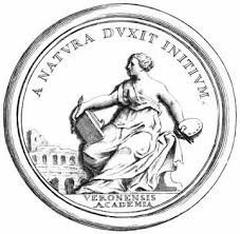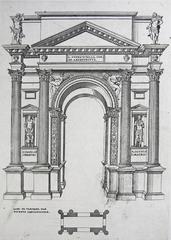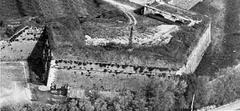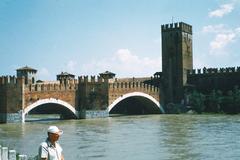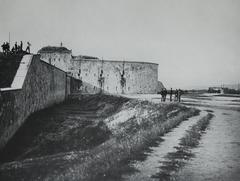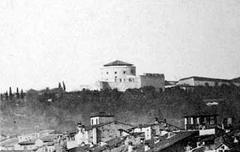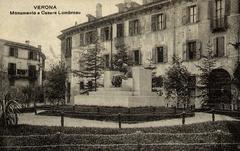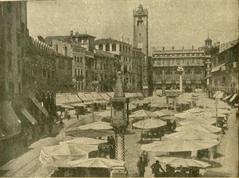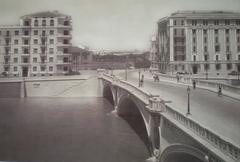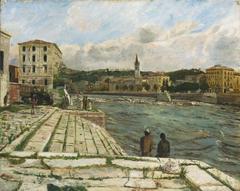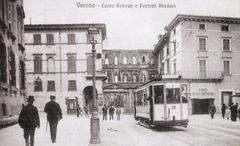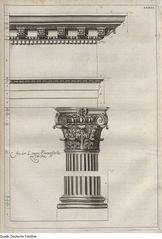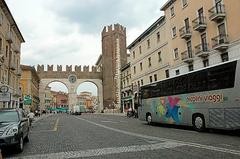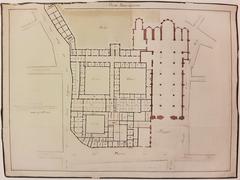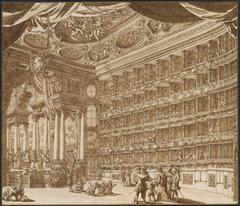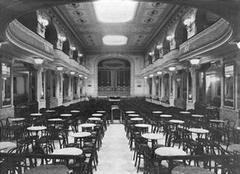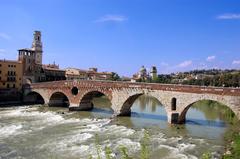Palazzo Giusti del Giardino: Complete Guide to Visiting Hours, Tickets, and Verona’s Historic Sites
Date: 03/07/2025
Introduction
Palazzo Giusti del Giardino is a celebrated symbol of the Italian Renaissance, blending exquisite architecture, historical significance, and breathtaking garden artistry in the heart of Verona, Italy. Originating from the ambitions of the Giusti family in the late 13th century and transformed into its present grandeur by Agostino Giusti in the 16th century, this site is renowned for its iconic cypress avenue, mythological statues, and one of Europe’s oldest hedge mazes. Over the centuries, it has welcomed distinguished visitors such as Goethe and Mozart and remains an active hub for culture, art, and community events.
This guide provides a comprehensive overview of Palazzo Giusti del Giardino, covering its historical evolution, visitor information, ticketing, accessibility, special events, and practical travel tips. Use this resource to plan your visit and fully immerse yourself in one of Verona’s most treasured historical sites.
For the most up-to-date information, always check the official Giardino Giusti website, Visit Verona, and Bewitched by Italy.
Table of Contents
- Introduction
- Historical Overview
- Visiting Information
- Exploring the Gardens and Palazzo
- Nearby Attractions and Travel Advice
- Frequently Asked Questions (FAQ)
- Conclusion
- References
Historical Overview
Origins and Early Development
The history of Palazzo Giusti del Giardino is closely tied to Verona’s medieval economy and society. After relocating from Tuscany in the late 13th century, the Giusti family established themselves as prominent wool-dyers, acquiring land along the ancient Via Postumia for their industrial operations (giardinogiusti.com; visitverona.it). For nearly two centuries, this site was dominated by dye works, a testament to the city’s thriving textile trade (bewitchedbyitaly.com).
Transformation into a Renaissance Estate
The transformation began in the 16th century, when Agostino Giusti envisioned a stately residence and garden that reflected his stature and the era’s artistic ideals. He commissioned a Mannerist-style palazzo, potentially influenced by renowned architect Michele Sanmicheli (en.wikipedia.org), and laid out a formal Italian Renaissance garden. Completed around 1580, the garden showcased symmetry, order, and harmony, with terraced levels, cypress avenues, fountains, statues, and a hedge maze (giardinogiusti.com).
Age of the Grand Tour and Cultural Influence
By the 17th and 18th centuries, the estate became a must-see for intellectuals and aristocrats on the Grand Tour. Luminaries such as Goethe, Mozart, and Emperor Joseph II visited, with Goethe famously referencing the ancient cypress trees in his writings (wanderyourway.com; visitverona.it). The gardens became an exemplar of Renaissance landscaping and a symbol of refined taste.
Architectural and Artistic Features
- Palazzo Architecture: The building, constructed atop former industrial structures, features an L- or U-shaped plan with a symmetrical façade, porticoed atrium, and central courtyard (it.wikipedia.org).
- Frescoed Interiors: The east wing is adorned with 18th-century frescoes by Louis Dorigny, while the west wing boasts late Venetian Baroque frescoes by Francesco Lorenzi (Dimore Storiche Italiane).
- Artifacts and Antiquities: Roman-era artifacts are displayed in the Collezione Molin Giusti, enhancing the palazzo’s historical narrative.
Modern Era: Preservation and Visitor Experience
After suffering wartime damage and undergoing restoration in the 20th century, the estate opened to the public and is now a National Monument and member of the Grandi Giardini Italiani network (giardinogiusti.com). Ongoing conservation efforts maintain the Renaissance layout, ancient trees, and statuary, ensuring a harmonious blend of historical authenticity and visitor comfort.
Visiting Information
Opening Hours and Ticket Prices
Palazzo Giusti del Giardino is typically open from Tuesday to Sunday. Standard visiting hours are 9:00 AM–7:00 PM in summer and 10:00 AM–6:00 PM in winter, with last entry one hour before closing. The site is closed on Mondays and December 25. Always check the official website for any updates or seasonal variations.
Ticket Prices (as of July 2025):
- Adult: €13.00
- Reduced (students, Verona Card holders): €9.00
- Groups (15+ people): €10.00 per person
- School groups: €6.00 (students), free for teachers
- Family packages: €25.00 (2 adults + 1 child), €35.00 (2 adults + 2+ children aged 6–18)
- Children under 6: Free
- Visitors with disabilities (and a companion): Free
Tickets are available online and at the entrance. Booking online is advised during peak periods.
Accessibility
The lower garden and main entrance areas are wheelchair accessible, but the hillside terraces and belvedere involve stairs and uneven terrain. Accessible restrooms are available near the main garden area. For specific needs, contact the administration in advance.
Visitor Tips
- Best Time to Visit: Spring and early autumn for vibrant gardens and fewer crowds.
- What to Bring: Comfortable shoes, water, and a camera for panoramic and detailed shots.
- Photography: Permitted for personal use; professional shoots require prior authorization.
- Food and Drink: Picnics are welcome, but there is no onsite café.
Guided Tours and Special Events
Guided tours in multiple languages can be booked online or at the entrance and are highly recommended for deeper insight into the history, art, and symbolism of the site. Palazzo Giusti regularly hosts cultural events, including concerts, exhibitions, festivals, and educational workshops (giardinogiusti.com). Check the events calendar for current offerings.
Exploring the Gardens and Palazzo
Garden Layout and Highlights
The gardens are structured according to Renaissance principles, with symmetrical parterres, boxwood hedges, mythological statues, and a celebrated cypress avenue. The boxwood maze near the main entrance is a favorite for families. The cypress avenue leads to a dramatic stone mask (mascherone) and grotto, and the upper terraces culminate at the belvedere, offering panoramic views of Verona (TuttoNotizie).
The Labyrinth and Belvedere
The 18th-century labyrinth, designed by Luigi Trezza, remains a playful and iconic feature. Ascending the garden leads visitors to the belvedere and a turret with a spiral staircase—historically used for medicinal plant cultivation and now for stunning city views (Verona Arte).
Artistic and Cultural Heritage
The palazzo’s interiors, where accessible, display period furnishings and frescoes, offering a glimpse into the Giusti family’s aristocratic life. The site’s reputation as a center for artistic and intellectual exchange endures, with ongoing exhibitions and performances (Artribune - Giardino Giusti).
Nearby Attractions and Travel Advice
Palazzo Giusti del Giardino is conveniently located near other major Verona historical sites, including:
- Arena di Verona
- Juliet’s House
- Piazza delle Erbe
- Castelvecchio Museum
The site is accessible by public transport and on foot from the city center. Parking is limited, so public transport or taxis are recommended.
Travel Tips:
- Arrive early or visit late in the day for cooler temperatures and fewer crowds.
- Download the Giardino Giusti app for maps and interactive features.
- Combine your visit with a tour of Verona’s other historic attractions.
Frequently Asked Questions (FAQ)
Q: What are the opening hours?
A: Open Tuesday to Sunday, with seasonal hours. Check the official website for updates.
Q: How much are tickets?
A: Adult tickets are €13.00, with various reductions and family packages available.
Q: Is the garden wheelchair accessible?
A: The lower garden is accessible; upper terraces and the belvedere are not.
Q: Are guided tours offered?
A: Yes, in several languages. Book online or at the entrance.
Q: Can I bring pets?
A: Only service animals are permitted.
Q: Is photography allowed?
A: Yes, for personal use. Professional shoots require permission.
Conclusion
Palazzo Giusti del Giardino offers an immersive journey into Verona’s Renaissance heritage, harmoniously uniting art, architecture, and nature. Whether you’re drawn by its historic gardens, Mannerist architecture, or vibrant cultural calendar, this site is a must-visit for travelers seeking both tranquility and inspiration.
To plan your visit, check the latest hours and events on the official website, download the Giardino Giusti app, and consider exploring more of Verona’s historic landmarks for a truly enriching experience.
References
- Giardino Giusti – Official Website
- Giardino Giusti – History and Gardens
- Giardino Giusti – Events
- Visitor Experience – Official Information
- Visit Verona – The Giardino Giusti
- Bewitched by Italy – Giardino Giusti Verona Renaissance Garden
- Wikipedia – Palazzo Giusti
- Wanderyourway – Giardino Giusti One of the Best Sites in Verona Italy
- Artribune – Giardino Giusti
